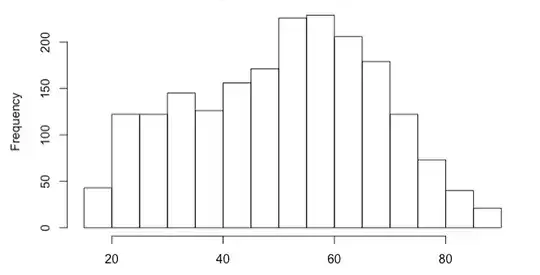Consider a random vector $X\equiv (X_1,...,X_L)$. Assume that each $X_l$ is continuously distributed with support $\mathbb{R}$, for $l=1,...,L$. Does this imply that also $X$ should be continuously distributed (although, not necessarily with support $\mathbb{R}^L$)?
I clarify that, by support of $X_l$, I intend the smallest closed set $\mathcal{X}$ such that $Pr(X_l\in \mathcal{X})=1$.
